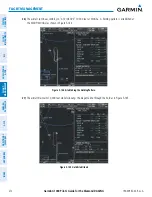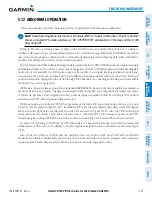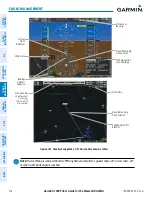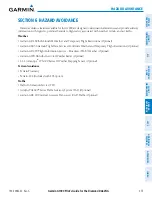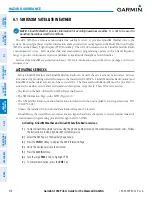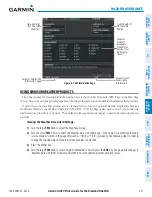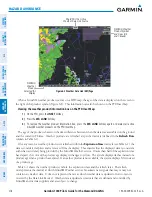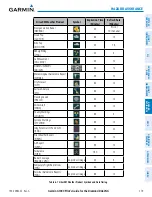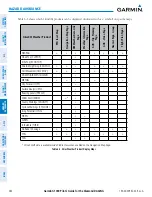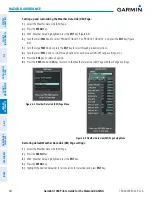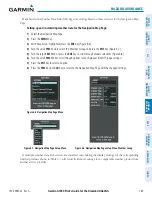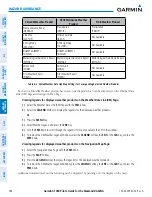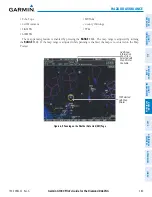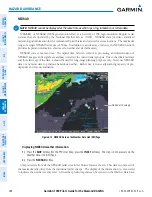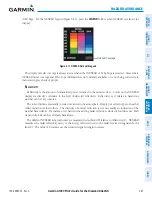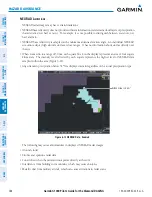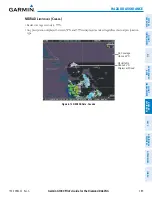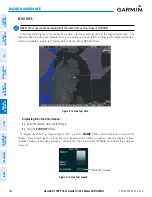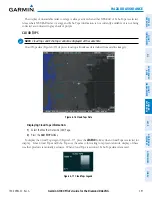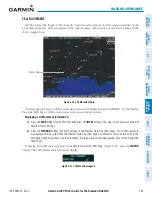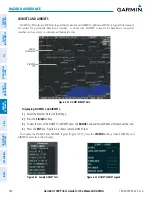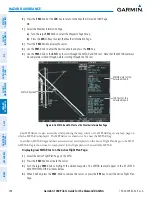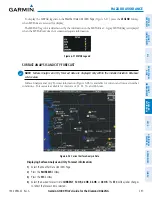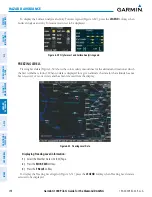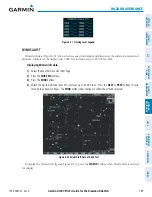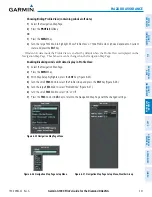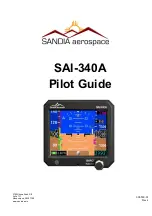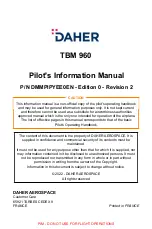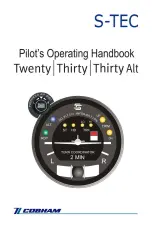
Garmin G1000 Pilot’s Guide for the Diamond DA42NG
190-00-00962-02 Rev. A
286
HAZARD AVOIDANCE
SY
STEM
O
VER
VIEW
FLIGHT
INSTRUMENTS
EIS
AUDIO P
ANEL
& CNS
FLIGHT
MANA
GEMENT
HAZARD
AV
OID
ANCE
AFCS
ADDITIONAL FEA
TURES
APPENDICES
INDEX
NEXRAD
NOTE:
NEXRAD cannot be displayed at the same time as echo tops, icing, turbulence, or terrain data.
WSR-88D, or NEXRAD (NEXt-generation RADar), is a network of 158 high-resolution Doppler radar
systems that are operated by the National Weather Service (NWS). NEXRAD data provides centralized
meteorological information for the continental United States and selected overseas locations. The maximum
range of a single NEXRAD radar site is 250 nm. In addition to a wide array of services, the NEXRAD network
provides important information about severe weather and air traffic safety.
NEXRAD data is not real-time. The lapsed time between collection, processing, and dissemination of
NEXRAD images can be significant and may not reflect the current radar synopsis. Due to the inherent delays
and the relative age of the data, it should be used for long-range planning purposes only. Never use NEXRAD
data or any radar data to penetrate hazardous weather. Rather, use it in an early-warning capacity of pre-
departure and enroute evaluation.
Figure 6-10 NEXRAD Data on the Weather Data Link (XM) Page
No Radar Coverage
Displaying NEXRAD weather information:
1)
Press the
MAP
Softkey (for the PFD Inset Map, press the
INSET
Softkey). This step is not necessary on the
Weather Data Link (XM) Page.
2)
Press the
NEXRAD
Softkey.
Composite data from all the NEXRAD radar sites in the United States is shown. This data is composed of
the maximum reflectivity from the individual radar sweeps. The display of the information is color-coded
to indicate the weather severity level. All weather product legends can be viewed on the Weather Data Link

